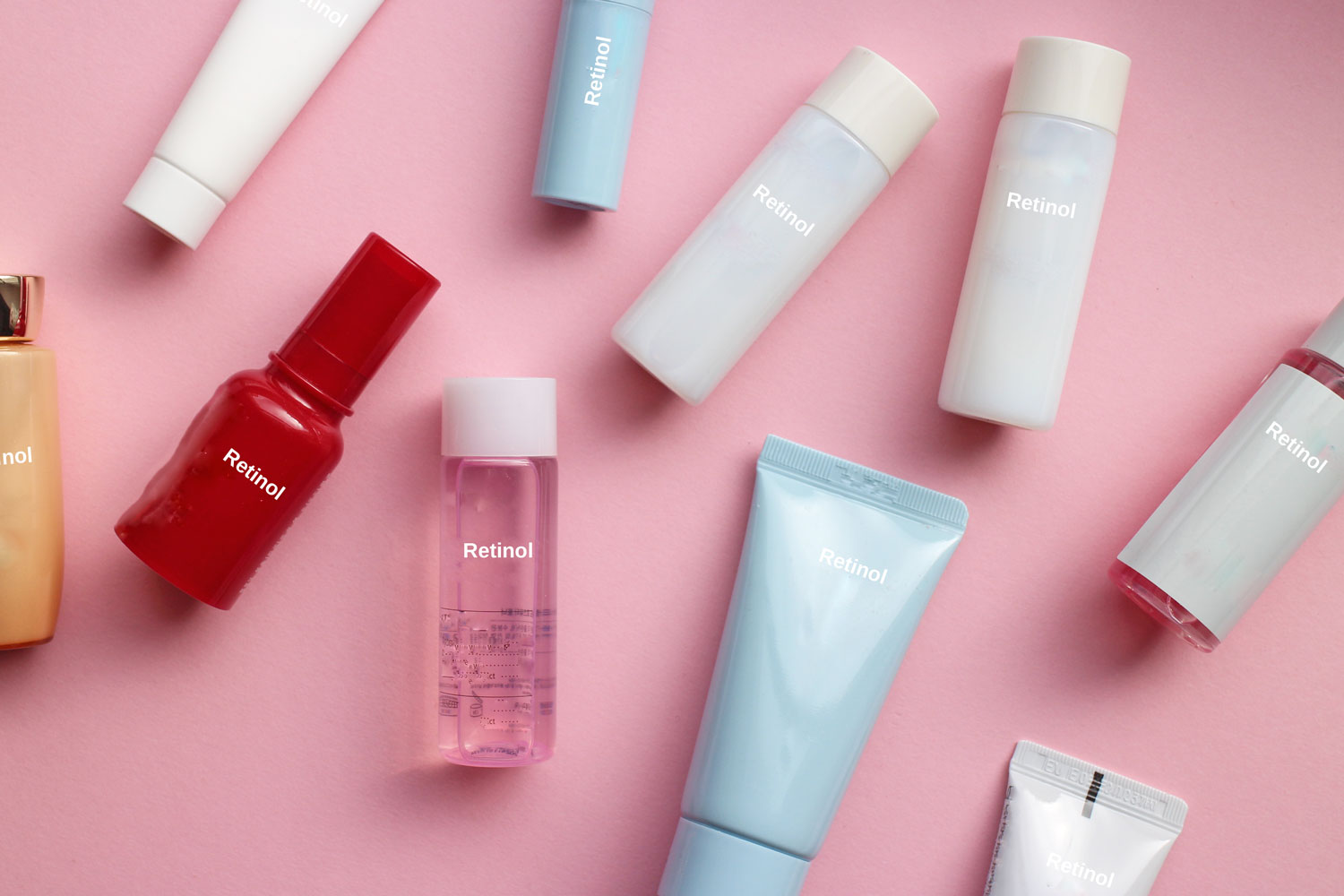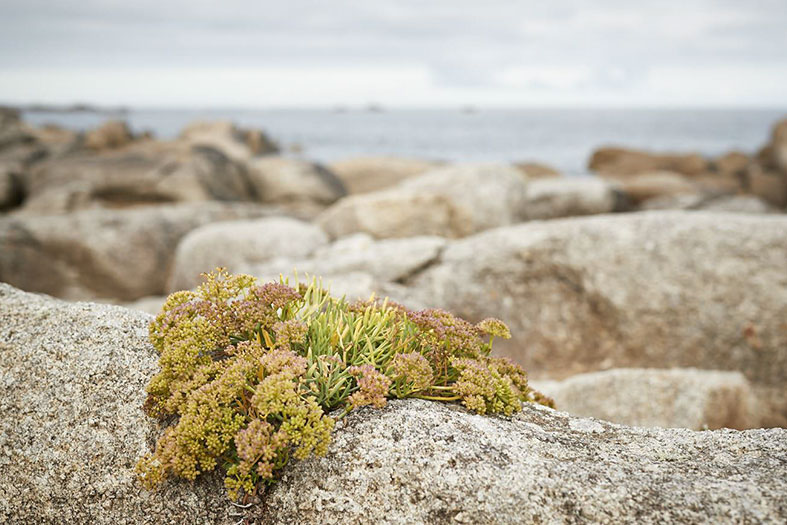This is a translation of my German blogpost Hinter den Beauty-Kulissen… ProTec Ingredia GmbH Proudly Presents: Natürliche Alternativen zu Retinol. Enjoy!
In cooperation with ProTec Ingredia // Retinol first became a star in the beauty world back in the 1990s but a few years ago, this active ingredient made a triumphant come-back. Because retinol has been around for such a long time it is a well-researched ingredient with many scientific studies proving its efficacy. It is often considered to be the gold standard in “anti-ageing” (a term which I don’t really like). Now skinfluencers on Instagram and TikTok have made retinol popular again and increasingly, perfumeries, drugstores and pharmacies are offering cosmetic products formulated with retinol. Even internationally famous beauty influencer Caroline Hirons recently launched her own beauty range with two retinol products. But what exactly is retinol? What are its advantages and disadvantages? And are there natural alternatives that are less irritating to the skin? You can find out more in this new installment of my beauty soap. Enjoy!
What is retinol and what are its advantages and disadvantages?
Retinol is a type of vitamin A and belongs to the group of retinoids. In our body, the vitamin plays an essential role in many different biological processes including the skin – here vitamin A boosts the production of skin cells and helps to renew the skin. It also increases the formation of collagen (which improves skin density) and its anti-oxidant effect reduces the negative effects of free radicals on the skin. This comprehensive bundle of skin care properties makes retinol an attractive ingredient for mature skin types as well as skin suffering from acne. It takes about 12 weeks for retinol to have a visible effect on the skin.
And this is how retinol works: In the skin, retinol first turns into retinal and then into the active retinoic acid. This retinoic acid is responsible for the strong effect of retinol on the skin but at the same time, it can also irritate the skin causing dryness and redness – the biggest disadvantage of retinol. To make it easier for the skin to handle retinol, it must get accustomed to the ingredient slowly. In the EU, cosmetics can only contain retinol in a concentration of up to 1%. Pure retinoic acid (tretinoin) is only allowed in prescription medicines. Using retinol products is also not advisable during pregnancy. Because the ingredient makes the skin more photo-sensitive (sensitive to sun light), it is essential to wear a high-SPF sunscreen every day.
The derivatives of retinol, such as retinyl palmitate, cause fewer skin irritations but are also less effective. In the skin, these derivatives undergo several gradual transitions until they are turned into retinoic acid which makes them less aggressive and causes fewer side effects. They are also more stable in formulations than retinol. Because of these many factors, retinol is not the best ingredient for sensitive skin.
Natural alternatives to retinol
Recently I noticed that more and more people are searching for plant-based and gentler alternatives to retinol on my website. This gave me the idea to introduce two active ingredients which offer an effect similar to retinol but are much less skin-irritating. Bakuchiol is probably the best-known phyto-retinol but there are several other exciting retinol alternatives.
Samphira Oil Bioactive from Codif
Samphira Oil Bioactive from Codif is also called the “retinol of the sea”. This active ingredient is produced from the sea fennel Crithmum maritimum, which grows on the French North Atlantic Coast and is harvested by hand. The concentrated extract is manufactured from the plant material with supercritical CO2.
To prove the effectiveness of Samphira Oil Bioactive, Codif commissioned In-Vitro and In-Vivo studies to research the effect of the ingredient on skin renewal and collagen synthesis. This research has shown that Samphira Oil Bioactive redensifies the epidermis and helps the skin to renew itself. Skin looks more even-toned and glowing, without the loss of moisture usually associated with retinol. At the same time, collagen production increases while the degradation of existing collagen in the skin is slowed down. The results of Samphira Oil Bioactive can be compared with stabilised retinol in these aspects. The big advantage: Samphira Oil Bioactive doesn’t irritate the skin; it does not cause any inflammatory reactions. The ingredient was even tested on sensitive skin. Certified by Cosmos.
INCI: Caprylic/capric triglyceride (and) Crithmum maritimum extract
NovoRetin™ from Mibelle Biochemistry
NovoRetin™ from Mibelle Biochemistry has an exciting mechanism: This active ingredient increases the amount of retinoic acid that is naturally occurring in the skin. At the same time, the degradation of the skin’s own retinoic acid (which usually degrades quickly) is slowed down. Therefore you don’t need to apply potentially skin-irritating retinol to get a similar effect: NovoRetin™ increases the skin‘s density and elasticity, refines the pores, reduces skin impurities and sebum production and at the same time, increases hydration levels in the skin. Unlike retinol, NovoRetin™ is much gentler on the skin and doesn’t lead to irritations. NovoRetin™ is based on mastic, an aromatic resin from the bark of a tree which only grows on a specific Greek island. In the ingredient, the resin is encapsulated – this “vectorised resin“ increases the bio-availability of NovoRetin™. Approved by Cosmos and Natrue.
INCI: Pistacia Lentiscus Gum / Pistacia Lentiscus (Mastic) Gum (and) Lecithin (and) Pentylene Glycol (and) Glyceryl Caprylate / Caprate (and) Caprylic / Capric Triglyceride (and) Aqua / Water
Trending: Retinol complexes
Over the last few months, I have discovered a number of newly launched beauty products that do not just contain retinol as the main active, but also retinol complexes. These complexes can contain a blend of different retinoids but frequently, a small amount of retinol is combined with a plant-based retinol alternative or a retinoic booster. It also makes sense to add skin-calming ingredients to a formula built around retinol. An example of this type of ingredient is Oat COM from Oat Cosmetics, an oat-based active which reduces redness and skin irritation.
© Pictures 2 and 3: The photos were supplied by Codif and Mibelle Biochemistry for the purposes of this blog post.
Trade customers can order the ingredients of Mibelle Biochemistry, Codif and Oat Cosmetics from the companies‘ German distributor ProTec Ingredia.
In the next instalment of my Beauty Soap we are going travelling! I’ll be taking you with me to visit the most famous trade show for cosmetic raw and active ingredients. Stay tuned!




